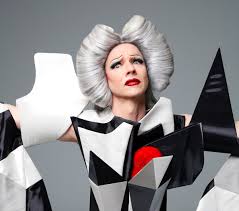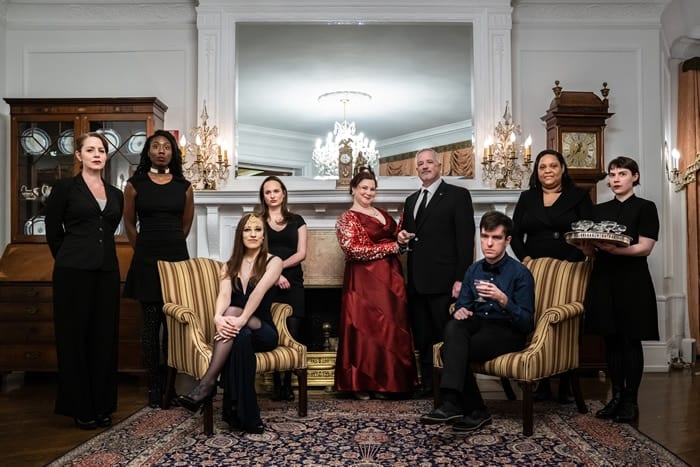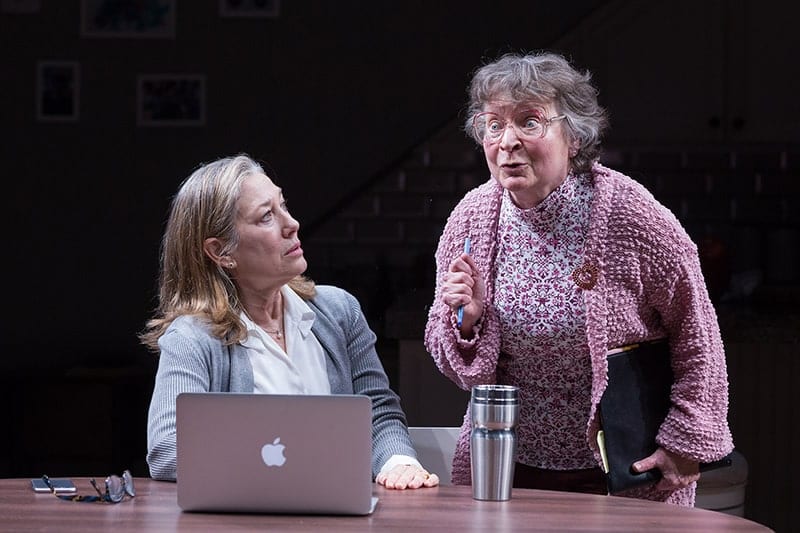by John Bavoso
This article was first published by DC Theatre Scene and can be read on their site here.
They say you should never meet your heroes, but what about crowd-surfing them? That was what I was thinking the night of February 8, as I helped keep John Cameron Mitchell aloft as he made his way through the orchestra on the hands of adoring Hedwig and the Angry Inch fans. We had gathered to bask in the glow of The Origin of Love, a punk-rock live Behind the Music episode of sorts and a gift to Hedwig heads everywhere.
The evening of songs, storytelling, and sass was the first stop on a national tour, and DC audiences got a tailored experience that few other audiences may have. Mitchell lived for a bit in Falls Church, his grandfather owned a house in Bethesda, and he had even had cousins in the audience. Throw in a few jokes from Hedwig about Melania, and you had a concert experience that was unique and surprisingly personalized.
Mitchell—who was joined on stage by members of his original Broadway band and powerhouse performer Amber Martin—sported a black, white, gray, and red costume that transformed into six different outfits over the course of the night. He also was crowned with Hedwig’s classic wig, this time tinted light gray or white, a sly nod to the fact that Mitchell has been embodying the trans East German rock ‘n’ roll songstress for literally decades at this point.
As Mitchell worked through some of the most beloved numbers from the Hedwig songbook—“The Origin of Love,” Sugar Daddy,” “Wig in a Box,” and “Wicked Little Town” among them—he filled in bits of personal history and trivia to give context to each song. Whether it was a story about meeting songwriter and co-Hedwig creator Stephen Trask on an airplane, or describing his first time taking the stage as Hedwig in a downtown punk rock drag club (and being way too theatre-kid prepared), he spun bits of lore behind one of the most beloved cult musicals ever created. When he explained that he and Stephen originally performed “The Long Grift” on the lawn of the rehab clinic where Jack, Stephen’s bass player and John’s lover, was trying to get sober, there was nary a dry eye in the house.
Ever the magnetic and dynamic performer, Mithell held the crowd in the palm of his manicured hand the entire night, despite moments he described as “more punk rock than Broadway.” Yes, he forgot the lyrics to a couple of songs and had to start “Sugar Daddy” over completely (although my guest had a theory that the band and lights reset so quickly, that that might not have been a totally spontaneous restart), and there was a mic stand he simply could not get to stand up straight, but not a single member of the audience cared—if anything, it only made him more human and relatable.
The night wasn’t only about Hedwig; Martin was given her time to shine with a David Bowie cover and solo performance of the song “Bermuda” from the soundtrack to Mitchell’s 2017 film, How to Talk to Girls at Parties (which, yes, also got me a little misty-eyed, thanks for asking). As part of the encore, he sang a couple of songs from and previewed his new musical, Anthem, a six-hour epic that will be released as a podcast first, and will feature the talents of legends like Glenn Close, Patty Lupone, and Cynthia Erivo.
The Origin of Love was a love letter to Hedwig and John Cameron Mitchell’s gift to fans less than a week before Valentine’s Day. Leaving the theater with a crowd of people filled with such love and joy in their hearts, just blocks away from the White House, was an experience I won’t soon forget and would happily repeat anytime.
The Origin of Love performance was one night only: Friday, February 8, 2019.







